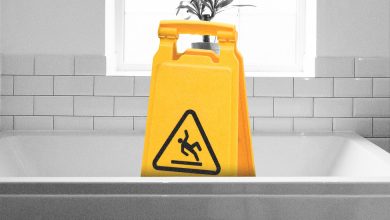Overdoses Have Skyrocketed During the Pandemic. How Do We Stop Them?

This article is part of the Debatable newsletter. You can sign up here to receive it on Tuesdays and Thursdays.
On Tuesday, New York became the first city in the United States to open officially authorized injection sites: medically supervised locations where drug users can find clean needles, naloxone — a medication that reverses overdoses — and options for addiction treatment. During the first day in operation, officials said, trained staff reversed two overdoses.
The intervention comes amid a staggering national surge in drug deaths: In the 12-month period that ended in April, as the pandemic enveloped the country, more than 100,000 Americans died of overdoses, surpassing the number of people who died from car crashes and guns combined. The figure marks not only a record high but also a nearly 30 percent increase from the same period last year.
“If we had talked a year ago, I would have told you deaths are skyrocketing,” Dr. Andrew Kolodny, medical director of the Opioid Policy Research Collaborative at Brandeis University’s Heller School for Social Policy and Management, told The Times. “But I would not have guessed it would get to this.”
Why are so many Americans dying of overdoses, and what measures — in addition to or instead of those New York took this week — could help address the crisis? Here’s what people are saying.
‘The O.D. crisis is in a distinctly new place’
Even before last year’s increase, the United States had some of the highest drug overdose death rates among similarly wealthy nations, with rates more than tripling in the past two decades.
That increase was fueled largely by the opioid epidemic, which started in the 1990s when pharmaceutical companies pushed to make prescription pills like OxyContin a cornerstone of pain treatment. But over the past decade, as those companies came under scrutiny for their role in the crisis, drugmakers and doctors tightened the supply — some argue too tightly — of prescription pills. But many who lost access to them were still addicted. The crackdown, as The Times’s Sarah Maslin Nir explains, opened a void on the black market for cheaper, more potent alternatives like heroin to fill.
More recently, the biggest driver of overdose deaths by far has been fentanyl, a fast-acting synthetic opioid that can be 50 times stronger than heroin. Because fentanyl is also much cheaper to produce than traditional plant-based opioids, it is increasingly added to other illegal street drugs to enhance their potency.
While some drug users actively seek out fentanyl, many die without knowing that a different drug they had consumed — cocaine, for example — was laced. “It’s not that fentanyl is attracting more users or creating new users,” Bryce Pardo, a drug policy researcher at the RAND Corporation, told The New Republic. “It’s just a very dangerous time to be a drug user and to be buying street drugs.”
Many experts say the pandemic played a leading role in last year’s surge. Public health resources were already stretched to the limits, so people working on the opioid crisis had to shift their attention to Covid treatment,Leana Wen, a former Baltimore health commissioner and medical analyst, told CNN. Many people struggling with addiction lost their health insurance and the ability to get treatment, as well as the jobs that paid for their housing and food.
And on top of that, Wen says, “we also can’t forget that addiction and mental health issues are diseases of despair, and this pandemic has worsened mental health for so many people.”
How to reduce overdoses
In recent years, Americans across the political spectrum have turned their backs on the war on drugs. Polls suggest that most now consider imprisoning people for illegal drug use to be inappropriately punitive, but it is also ineffective: According to research from the Pew Charitable Trusts, there is no statistically significant relationship between state drug imprisonment rates and self-reported drug use, drug arrests and drug overdose deaths.
By contrast, treating addiction as a health problem rather than a crime has shown clear benefits, as The Times’s Austin Frakt wrote last year. Proponents of drug policy reform often point to Portugal as a successful case study: In 2001, the country decriminalized (but did not legalize) the use of all illicit drugs in small amounts. Overdose deaths plummeted, to the point where the country now has one of the lowest rates of drug death in Western Europe.
But Frakt noted that Portugal’s example is often misunderstood as a story mainly about decriminalization. In truth, decriminalization was just one prong of a broader strategy to encourage treatment. Portugal still penalizes people caught possessing or using illicit drugs by sending them to regional panels of social workers, medical professionals and drug experts, who can refer people to drug treatment programs, hand out fines or impose community service. Expanding treatment in this way, Frakt argued, “might bring the most tangible benefit to the United States.”
The $1.9 trillion relief bill that Congress passed in the spring did include $1.5 billion for prevention and treatment of substance use disorders, but critics say the response is inadequate to the magnitude of the crisis. Addiction treatment services can be sparse and extremely expensive in the United States, even with health insurance, putting them out of reach for many who need them. During his campaign, President Biden proposed a $125 billion investment to make prevention, treatment and recovery services available to all, but other issues, like infrastructure, have taken priority.
Experts say regulatory changes are also needed to make treatment more accessible. For example, physicians still need federal permission to prescribe buprenorphine, a first-line medication for opioid use disorder that has been shown to reduce overdose deaths and keep people in treatment longer. Because it’s a controlled substance, many pharmacies also fear running afoul of law enforcement by dispensing it.
[“As Overdose Deaths Soar, D.E.A.-Wary Pharmacies Shy From Dispensing Addiction Medication”]
For deaths to really come down, “you have to make it much easier for someone who is addicted to opioids to access treatment, particularly with buprenorphine,” Kolodny said. “It has to be easier to get treatment than to buy a bag of dope.”
For the first time, Congress also appropriated funds this year for harm reduction measures, the chief goal of which is not necessarily to help drug users achieve abstinence but to reduce their risk of dying or acquiring infections like H.I.V. and hepatitis C.
“It’s an enormous signal, recognizing that not everybody who uses drugs is ready for treatment,” explained Daliah Heller, director of drug use initiatives at Vital Strategies, a global public health organization. “Harm reduction programs say: ‘OK, you’re using drugs. How can we help you stay safe and healthy and alive first and foremost?’”
Some harm reduction proposals, like increasing the availability of naloxone, enjoy broad support. In New Jersey, naloxone is now widely available from community organizations and pharmacists without a prescription. Officials say the distribution effort is a major reason overdose deaths actually fell slightly in the state last year, bucking the national trend.
Other harm reduction measures, like rapid-test strips that detect whether illicit drugs have been laced with fentanyl and the kind of safe injection sites that debuted in New York this week, are more controversial. Critics say that safe injection sites, in particular, encourage drug use, end up littering neighborhoods or cause an increase in crime. Yet research on real-world injection site programs — mainly in Europe, Canada and Australia — has so far contradicted those assumptions.
Last, policymakers should try new ways of restricting the flow of highly lethal drugs into the country, Kathleen Frydl, a political historian, argues in Washington Monthly. Fentanyl, for its part, is primarily manufactured in China, which sends the drug or its raw ingredients on cargo ships to Mexico, where it is finished by cartels. Much of America’s heroin supply, too, derives from Mexico and South America.
Policymakers have tended to focus on the amount of such drugs seized at the border as a metric of success. But Frydl argues that border interdiction has proved to be a failed strategy, one that merely encourages suppliers to produce more drugs — and more potent ones — and fosters corruption.
Instead, Frydl argues that policymakers should use trade policy to control drug trafficking:
-
Any trade talks with a source country, like Mexico or China, would include drug supply reduction goals, much like the emissions reduction goals that environmentalists argue trade deals should include.
-
Failure to meet those goals would incur trade penalties, either in the form of additional tariffs on imports or withholding of exports.
-
Success could be measured in the price and potency of drugs on the street, especially in places most affected by overdose deaths.
“Prior to World War II, during a more multilateral era when the U.S. was one power jostling with others, American drug policy relied on taxes and tariffs, not crime and punishment,” Frydl writes. “We used to stop the drug flow through trade negotiations. It can work again.”
Do you have a point of view we missed? Email us at [email protected]. Please note your name, age and location in your response, which may be included in the next newsletter.
READ MORE
“How Working-Class Life Is Killing Americans, in Charts” [The New York Times]
“The Age of American Despair” [The New York Times]
“Why Are Blue-Collar Americans Dying of Despair?” [Bloomberg]
“The opioid epidemic isn’t unsolvable” [Vox]
“How Did the Sacklers Pull This Off?” [The New York Times]





